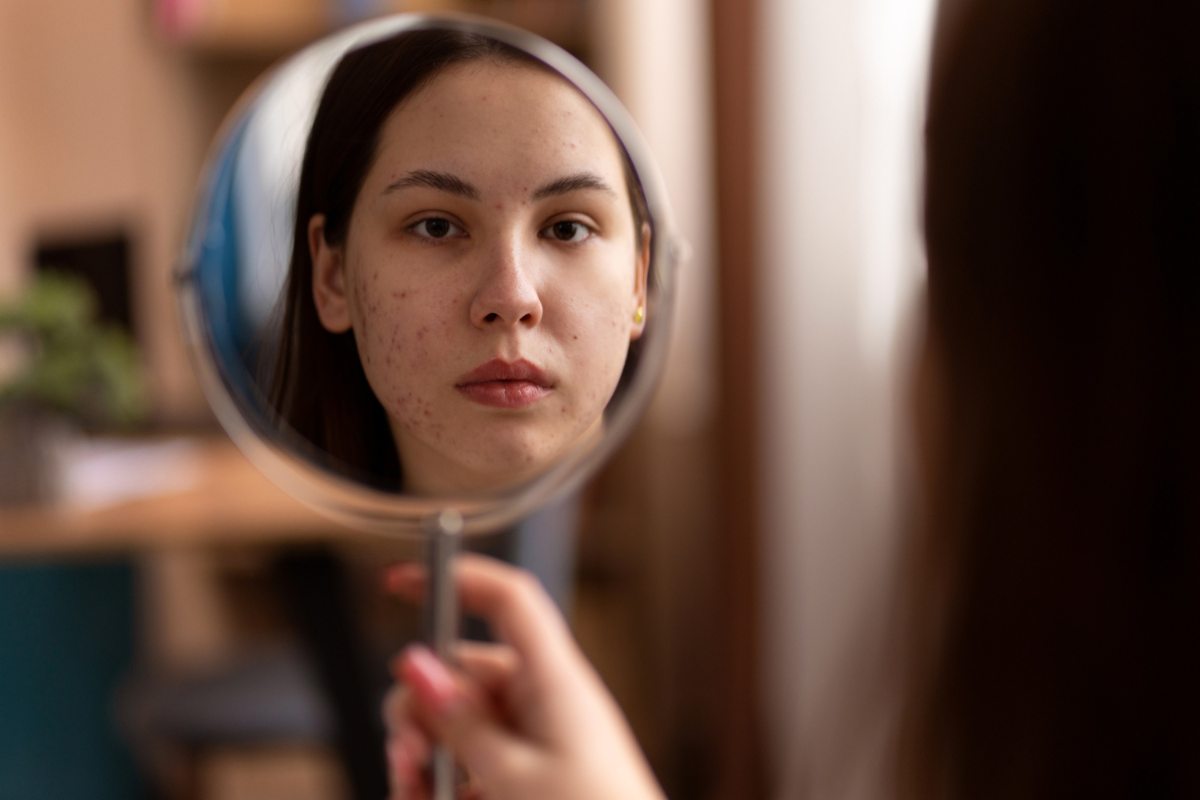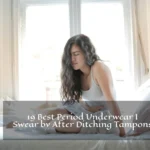Acne scars can feel like a permanent reminder of teenage struggles, but they don’t have to be. If you’re looking at your reflection and seeing marks that make you feel self-conscious, you’re not alone. About 95% of people who have moderate to severe acne end up with some scarring.
From simple at-home routines that cost less than $50 per month to advanced laser treatments that can dramatically improve your skin’s appearance, there are options for every budget and severity level.
I’ve been treating acne scars for over 15 years, and I’ve seen patients go from avoiding mirrors to feeling confident in their skin again. The key is understanding what type of scars you have and choosing the right treatment approach.
From identifying different types to choosing between professional treatments and at-home options. You’ll learn what actually works, what’s a waste of money, and how to prevent new scars from forming.
Whether you’re dealing with a few minor marks or more severe scarring, there’s hope for improvement. Let’s start by understanding what causes these marks and how to treat them effectively.
What Are Acne Scars?
Think of them like dents in a car after an accident – the damage stays even after you fix the original problem.
When you have acne, your skin tries to heal itself by making new collagen. Sometimes, it makes too much collagen, creating raised scars. Other times, it doesn’t make enough, leaving indented scars behind.
Quick Facts About Acne Scars:
- They affect about 95% of people who have moderate to severe acne
- Some people are more likely to get scars due to genetics
- Early treatment of acne reduces scar formation
Types of Acne Scars
Here are the main types:
Atrophic Scars (Indented Scars)
Ice Pick Scars
- What they look like: Deep, narrow holes that go straight down into your skin
- Size: Usually less than 2mm wide
- Why they form: From severe cystic acne that destroys skin tissue
- Best treatments: TCA CROSS, laser resurfacing, punch excision
Boxcar Scars
- What they look like: Round or oval depressions with sharp, defined edges
- Size: 1.5-4mm wide
- Depth: Shallow to deep
- Best treatments: Subcision, dermal fillers, fractional laser
Rolling Scars
- What they look like: Wave-like depressions that make skin look uneven
- Cause: Fibrous bands pull down on the skin
- Best treatments: Subcision, microneedling, fractional laser
Hypertrophic Scars (Raised Scars)
These stick up above your normal skin level. They’re more common on the chest, back, and shoulders.
Characteristics:
- Thick and raised
- Red or pink color
- It can be itchy or tender
- Stay within the original wound area
Keloid Scars
Similar to hypertrophic scars but grow beyond the original acne spot.
Key differences:
- Grow larger than the original pimple
- More common in people with darker skin
- Can keep growing over time
- Harder to treat than other scar types
What Causes Acne Scars
Not everyone who gets acne will have scars. Several factors make scarring more likely:
Primary Causes
- Severe Inflammation When acne goes deep into your skin, it damages the tissue around it. Your body tries to repair this damage, but sometimes the repair job isn’t perfect.
- Picking or Squeezing This pushes infected material deeper into your skin and increases inflammation. It also introduces bacteria to your hands.
- Delayed Treatment: The longer acne stays inflamed, the more damage it can cause to your skin tissue.
Risk Factors
| Factor | How It Affects Scarring |
|---|---|
| Genetics | Some families are more prone to scarring |
| Skin Color | Darker skin tones are more likely to develop keloid scars |
| Age | Teenage acne often causes more scarring |
| Acne Severity | Cystic and nodular acne create more scars |
| Hormones | Hormonal acne tends to be more inflammatory |
Personal Experience Note
In my 15 years treating acne patients, I’ve noticed that people who start treatment early – even for mild acne – rarely develop significant scarring. The key is controlling inflammation before it damages deeper skin layers.
At-Home Treatments for Acne Scars
You can improve mild scarring at home with the right products and techniques. Here’s what actually works:
Topical Treatments
Retinoids (Vitamin A Derivatives)
How they work: Speed up cell turnover and boost collagen production
Over-the-counter options:
- Retinol (gentler, good for beginners)
- Retinyl palmitate (mildest form)
Prescription options:
- Tretinoin (Retin-A) – most effective
- Adapalene (Differin) – now available OTC
- Tazarotene (Tazorac) – strongest but most irritating
How to use:
- Start 2-3 times per week
- Apply at night only
- Always use sunscreen during the day
- Expect some peeling and redness initially
Alpha Hydroxy Acids (AHAs)
Best types for scars:
- Glycolic acid (smallest molecule, penetrates deepest)
- Lactic acid (gentler, good for sensitive skin)
Concentrations to look for:
- Beginners: 5-8%
- Experienced users: 10-12%
- Professional peels: 20-70%
Beta Hydroxy Acid (BHA)
Salicylic Acid is the main BHA for acne scars.
Benefits:
- Penetrates oil-filled pores
- Reduces inflammation
- Gentle enough for daily use
Best concentration: 1-2% for daily use
Vitamin C
How it helps: Boosts collagen production and fades dark spots
Most effective forms:
- L-ascorbic acid (most potent but unstable)
- Magnesium ascorbyl phosphate (stable, gentle)
- Sodium ascorbyl phosphate (good for oily skin)
Usage tips:
- Apply in the morning
- Start with 10% concentration
- Store in a cool, dark place
Physical Treatments
Microneedling at Home
How it works: Creates tiny wounds that trigger collagen production
Needle lengths for home use:
- 0.25mm: Safe for beginners
- 0.5mm: For experienced users only
- 1.0mm+: Professional use only
Safety rules:
- Disinfect the device before use
- Never share needles
- Don’t use on active acne
- Follow up with gentle skincare
Chemical Peels at Home
Mild peels you can do safely:
| Acid Type | Concentration | Frequency |
|---|---|---|
| Glycolic | 10–20% | Weekly |
| Lactic | 10–25% | Weekly |
| Salicylic | 15–20% | Bi-weekly |
Important safety tips:
- Always do a patch test first
- Never leave on longer than recommended
- Use sunscreen religiously after peeling
Professional Treatments
Professional treatments give faster, more dramatic results than at-home options. Here’s what dermatologists and plastic surgeons offer:
Laser Treatments
Fractional CO2 Laser
How it works: It creates thousands of tiny holes in your skin to trigger healing
Best for:
- Deep ice pick scars
- Boxcar scars
- Overall skin texture
What to expect:
- 3-7 days of downtime
- Significant redness and swelling
- Results visible after 3-6 months
- Usually need 1-3 treatments
Cost range: $1,500-$4,000 per session
Erbium Laser
A gentler alternative to CO2:
- Less downtime (2-5 days)
- Good for lighter skin tones
- Multiple sessions are usually needed
- Cost: $800-$2,500 per session
Nd: YAG Laser
Best for darker skin tones:
- Lower risk of pigmentation changes
- Minimal downtime
- Good for rolling scars
- Cost: $500-$1,500 per session
Injectable Treatments
Dermal Fillers
How they work: Fill in depressed scars from underneath
Types of fillers used:
- Hyaluronic acid (temporary, 6-18 months)
- Poly-L-lactic acid (stimulates collagen, lasts 2+ years)
- Calcium hydroxylapatite (semi-permanent)
Best for:
- Boxcar scars
- Rolling scars
- Shallow ice pick scars
Process:
- Numbing cream applied
- Filler injected under the scar
- Immediate results
- Touch-ups may be needed
Cost: $600-$1,200 per syringe
Subcision
The procedure: A needle breaks up fibrous bands under rolling scars
What happens:
- Local anesthesia injected
- May combine with fillers for better results
Recovery:
- Bruising for 1-2 weeks
- Some swelling
- Results improve over 3-6 months
Cost: $500-$1,500 per session
Chemical Peels (Professional)
TCA Peels (Trichloroacetic Acid)
Concentrations used:
- Light: 10-25%
- Medium: 35-50%
- Deep: 50%+
TCA CROSS Technique:
- Stands for “Chemical Reconstruction of Skin Scars”
- High concentration TCA applied directly to ice pick scars
- Causes controlled destruction and regrowth
- Very effective for deep, narrow scars
Phenol Peels
The strongest peel available:
- Only for severe scarring
- Requires sedation
- 2-3 weeks of recovery
- Dramatic results
- Risk of permanent lightening
Surgical Options
Punch Excision
For deep ice pick scars:
- The scar is cut out with a small round blade
- The wound is closed with stitches or a skin graft
- Results in a flat scar that can be treated further
Punch Elevation
For boxcar scars:
- The scar base is cut and raised to the skin level
- No tissue is removed
- The base attaches at the right level
Subcutaneous Incision
For rolling scars:
- Cuts the fibrous bands under the skin
- Allows depressed areas to rise
- Often combined with other treatments
Natural Remedies
While not as effective as medical treatments, some natural ingredients can help improve mild scarring:
Proven Natural Ingredients
Rosehip Oil
Active compounds: Vitamin C, vitamin A, essential fatty acids
How to use:
- Apply 2-3 drops to clean skin
- Use morning and night
- Look for cold-pressed, organic oil
Scientific backing: Studies show improvement in scar appearance after 12 weeks of use.
Honey (Manuka Honey)
Why it works: Antibacterial and wound-healing properties
Application:
- Use medical-grade manuka, honey
- Apply a thin layer for 10-15 minutes
- Use 2-3 times per week
Aloe Vera
Benefits: Anti-inflammatory and moisturizing
Best form: Fresh gel from the plant or 99% pure aloe gel
Usage: Apply twice daily to clean the skin
Natural Acids
Lemon Juice (Use with Caution)
Contains: Citric acid and vitamin C
Risks:
- It can cause chemical burns
- Increases sun sensitivity
- May worsen pigmentation
Safer alternatives: Commercial vitamin C serums
Apple Cider Vinegar
Contains: Acetic acid and malic acid
Dilution required: Mix 1 part vinegar with 3 parts water
Precautions:
- Always dilute
- Patch test first
- Don’t use on broken skin
DIY Treatments That Actually Work
Oatmeal Masks
Recipe:
- 1/2 cup ground oatmeal
- 2 tablespoons honey
- 1 tablespoon lemon juice
Benefits: Gentle exfoliation and soothing
Turmeric Paste
Recipe:
- 1 teaspoon turmeric powder
- 2 teaspoons honey
- 1 teaspoon milk
Warning: Can temporarily stain skin yellow
What Doesn’t Work
Common myths:
- Toothpaste on scars
- Baking soda scrubs
- Pure lemon juice
- Coconut oil for deep scars
Prevention Tips
The best treatment for acne scars is preventing them in the first place. Here’s how:
Acne Treatment Basics
Start Treatment Early
Why timing matters:
- Mild acne is easier to control
- Less inflammation means less scarring
- Early treatment prevents acne from getting worse
When to start: As soon as you notice consistent breakouts
Don’t Pick or Squeeze
Why it’s harmful:
- Pushes bacteria deeper
- Increases inflammation
- It can create new acne spots
- Always makes scarring worse
Alternative strategies:
- Use spot treatments instead
- Apply ice to reduce swelling
- See a professional for extractions
Professional Prevention
Regular Dermatologist Visits
When to see a dermatologist:
- Acne doesn’t improve after 6-8 weeks of home treatment
- You have cystic or nodular acne
- Acne is affecting your self-esteem
- You’re already seeing some scarring
Professional Extractions
Benefits:
- Safely removes stubborn blackheads
- Reduces risk of scarring
- Done with sterile tools
- A professional knows the proper technique
Lifestyle Factors
Diet and Acne
Foods that may worsen acne:
- High-glycemic foods (white bread, sugary snacks)
- Dairy products (especially skim milk)
- Whey protein supplements
Helpful foods:
- Omega-3 rich fish
- Zinc-rich foods (pumpkin seeds, beef)
- Antioxidant-rich fruits and vegetables
Stress Management
How stress affects acne:
- Increases cortisol production
- Makes existing acne worse
- Slows healing process
Stress reduction techniques:
- Regular exercise
- Adequate sleep (7-9 hours)
- Meditation or deep breathing
- Hobbies and relaxation
Skincare Habits
Good habits:
- Wash face twice daily (not more)
- Use clean pillowcases
- Don’t touch your face
- Remove makeup before bed
- Use non-comedogenic products
Bad habits to avoid:
- Over-washing or scrubbing
- Using harsh products
- Picking at skin
- Sleeping in makeup
- Using dirty makeup brushes
When to See a Dermatologist
Knowing when professional help is needed can save you time and money and prevent permanent scarring.
Red Flags – See a Dermatologist Immediately
Severe acne symptoms:
- Cysts larger than 5mm
- Acne that’s painful to touch
- Deep, hard bumps under the skin
- Acne that leaves dark spots or scars
- Breakouts that don’t respond to over-the-counter treatments
Existing scar concerns:
- Scars are getting worse
- New scars appear frequently
- Scars affecting your confidence
- Home treatments aren’t working after 3-6 months
What to Expect at Your First Visit
The Consultation Process
Medical history questions:
- How long you’ve had acne
- Previous treatments tried
- Family history of acne or scarring
- Current skincare routine
- Medications you’re taking
Physical examination:
- Scar type assessment
- Skin tone evaluation
- Overall skin health check
- Photography for tracking progress
Treatment Planning
Factors dermatologists consider:
- Your skin type and tone
- Scar depth and size
- Your budget and timeline
- Downtime availability
- Previous treatment responses
Typical treatment progression:
- Conservative treatments first
- Combination approaches
- More aggressive treatments, if needed
- Maintenance therapy
Questions to Ask Your Dermatologist
About treatment options:
- Which treatment is best for my scar type?
- How many sessions will I need?
- What results can I realistically expect?
- What are the risks and side effects?
About cost and timeline:
- What will this cost overall?
- Does insurance cover any treatments?
- How long are between treatments?
- When will I see the results?
About aftercare:
- What skincare products should I use?
- What activities should I avoid?
- How do I care for my skin during healing?
- When should I follow up?
Cost and Insurance Coverage
Understanding the financial aspect helps you plan your treatment journey.
Treatment Costs by Type
Professional Treatments
| Treatment | Cost Per Session | Sessions Needed | Total Cost Range |
|---|---|---|---|
| Microneedling | $200–$700 | 3–6 | $600–$4,200 |
| Chemical Peel (Light) | $150–$400 | 4–8 | $600–$3,200 |
| Chemical Peel (Medium) | $500–$1,500 | 1–3 | $500–$4,500 |
| Laser Resurfacing | $1,500–$4,000 | 1–3 | $1,500–$12,000 |
| Dermal Fillers | $600–$1,200 | 1–2/year | $600–$2,400 per year |
| Subcision | $500–$1,500 | 1–3 | $500–$4,500 |
Maintenance Costs
Ongoing expenses to consider:
- Professional skincare products: $50-$200/month
- Maintenance treatments: $500-$2,000/year
- Sun protection products: $20-$50/month
Insurance Coverage
Generally NOT covered:
- Cosmetic scar treatments
- Laser treatments for scarring
- Dermal fillers
- Most professional peels
Sometimes covered:
- Dermatologist consultations
- Prescription acne medications
- Severe scarring that affects function
Tips for insurance:
- Get treatments coded as medical, not cosmetic
- Document how scarring affects your life
- Ask for pre-authorization
- Keep detailed records
Ways to Reduce Costs
Timing Strategies
- Look for seasonal promotions
- Buy package deals
- Schedule during off-peak times
Alternative Options
- Training clinics at medical schools
- Nurse practitioner treatments
- Med spa packages
- Financing options
Gradual Approach
- Start with less expensive treatments
- Build up to more intensive procedures
- Focus on the most bothersome scars first
FAQ About Acne Scars
General Questions
Q: Will my acne scars ever completely disappear?
- A: Deep scars rarely disappear completely, but they can be significantly improved. Most treatments can achieve 50-80% improvement in scar appearance. The goal is to make scars less noticeable, not necessarily invisible.
Q: How long does it take to see results from scar treatments?
A: Timeline varies by treatment:
- Topical treatments: 3-6 months
- Chemical peels: 2-4 weeks per peel
- Laser treatments: 3-6 months for full results
- Fillers: Immediate, but may need touch-ups
Q: Can I treat acne scars if I still have active acne?
- A: It’s best to control active acne first. However, some gentle treatments like retinoids can help both issues.
Q: Are acne scars hereditary?
- A: Yes, genetics play a role. If your parents or siblings have acne scars, you’re more likely to develop them. However, early treatment can still prevent most scarring.
Treatment-Specific Questions
Q: Is microneedling safe to do at home?
- A: Home microneedling with short needles (0.25-0.5mm) can be safe if done properly. However, professional treatments with longer needles (1.0-2.5mm) are more effective and safer when performed by trained professionals.
Q: How many laser treatments will I need?
A: Most people need 1-3 treatments spaced 4-8 weeks apart. The number depends on:
- Scar severity
- Laser type used
- Your skin’s healing response
- Desired level of improvement
Q: Do dermal fillers for scars last as long as fillers for wrinkles?
- A: Generally, yes. Hyaluronic acid fillers last 6-18 months in scars, similar to other areas.
Q: Can I combine different scar treatments?
A: Yes, combination treatments often work better than single approaches. Common combinations include:
- Subcision + fillers
- Laser + microneedling
- Chemical peels + retinoids: Your dermatologist will create a plan that’s safe and effective.
Safety and Side Effects
Q: What are the risks of laser scar treatment?
A: Potential risks include:
- Temporary redness and swelling
- Changes in skin pigmentation
- Infection (rare)
- Worsening of scars (very rare)
- Burns from improper technique
Choosing an experienced provider reduces these risks significantly.
Q: Can people with dark skin safely get scar treatments?
A: Yes, but some treatments carry higher risks of pigmentation changes. Safer options for darker skin include:
- Nd: YAG lasers
- Chemical peels with lower concentrations
- Microneedling
- Certain types of radiofrequency treatments
Q: How long should I avoid sun exposure after treatment?
A: Sun protection is crucial during healing:
- Laser treatments: 2-4 weeks of strict sun avoidance
- Chemical peels: 1-2 weeks
- Microneedling: 3-7 days. Always use broad-spectrum SPF 30+ sunscreen after the initial healing period.
Cost and Practical Questions
Q: What’s the most cost-effective scar treatment?
- A: For mild scarring, prescription retinoids combined with professional chemical peels often provide the best value. For moderate to severe scarring, a combination approach starting with less expensive treatments (microneedling, subcision) before moving to lasers can be cost-effective.
Q: How do I know if a treatment is working?
A: Signs of improvement include:
- Scars appearing less deep
- Smoother skin texture
- Better makeup application
- Improved confidence in your appearance
- Positive comments from others
Take photos in the same lighting to track progress objectively.
Q: Can I wear makeup during scar treatment?
A: It depends on the treatment:
- Topical treatments: Yes, after products absorb
- After peels: Wait 24-48 hours
- After laser: Wait 3-7 days
- After microneedling: Wait 24 hours
Use clean brushes and non-comedogenic products to avoid infection.
Long-Term Expectations
Q: Will my scars come back after treatment?
A: Properly treated scars don’t usually return to their original appearance. However:
- New acne can create new scars
- Aging may change skin texture
- Sun damage can worsen the appearance
- Some treatments need periodic maintenance
Q: What’s the youngest age for scar treatment?
A: Most dermatologists recommend waiting until:
- Active acne is controlled
- The patient is mature enough for aftercare
- Usually 16+ for professional treatments
- Earlier intervention with topical treatments is fine
Q: Do acne scars get worse with age?
A: Scars themselves don’t worsen, but aging can make them more noticeable due to:
- Loss of skin elasticity
- Decreased collagen production
- Changes in facial volume
- Sun damage accumulation
This is why many people seek treatment in their 30s and 40s, even if scars have been stable for years.
Final Expert Recommendations
After treating hundreds of patients with acne scars, here are my top recommendations:
Start Simple
Don’t jump into expensive treatments right away. A good skincare routine with retinoids and professional-grade products can make a significant difference in mild scarring.
Be Patient
Scar improvement takes time. I tell my patients to think in terms of months, not weeks. Most people see gradual improvement over 6-12 months of consistent treatment.
Realistic Expectations
Perfect skin isn’t the goal – significant improvement is. Most treatments can achieve 50-80% improvement, which is usually enough to restore confidence and make scars much less noticeable.
Combination Approach
The best results often come from combining treatments. For example, I frequently recommend subcision to release tethered scars, followed by laser resurfacing to improve texture and maintenance with retinoids.
Prevention is Key
If you’re still dealing with active acne, prioritize controlling breakouts. Every new pimple is a potential scar, so prevention is always better than treatment.
Choose Your Provider Carefully
Acne scar treatment is both an art and a science. Look for providers who:
- Specialize in acne scarring
- Show before/after photos of their work
- Explain risks honestly
- Create customized treatment plans
- Have proper training and certifications
Don’t Give Up
I’ve seen patients who were told their scars were “untreatable” achieve dramatic improvements with the right approach. If one treatment doesn’t work, there are usually other options to try.
The field of scar treatment continues to advance, with new technologies and techniques becoming available regularly. What matters most is starting your journey with realistic expectations, a good provider, and patience for the process.





